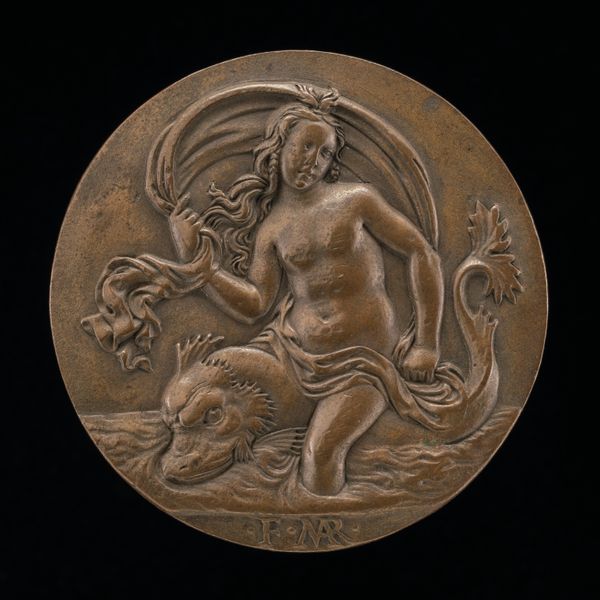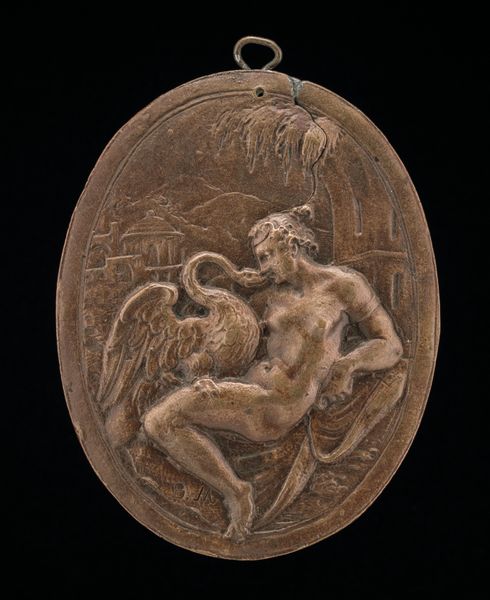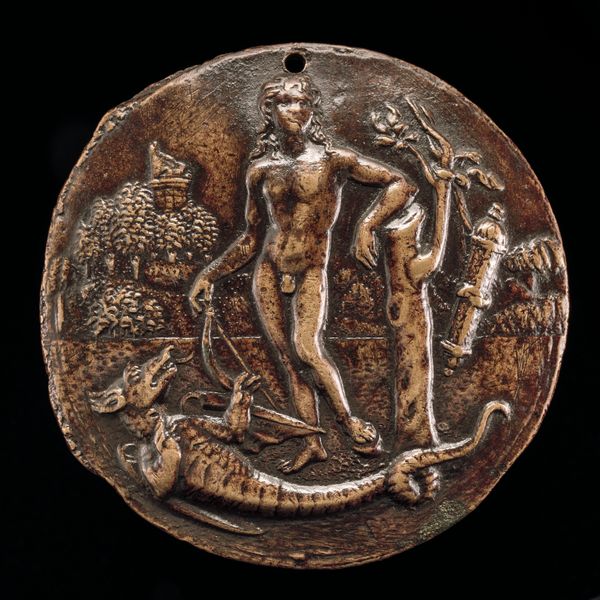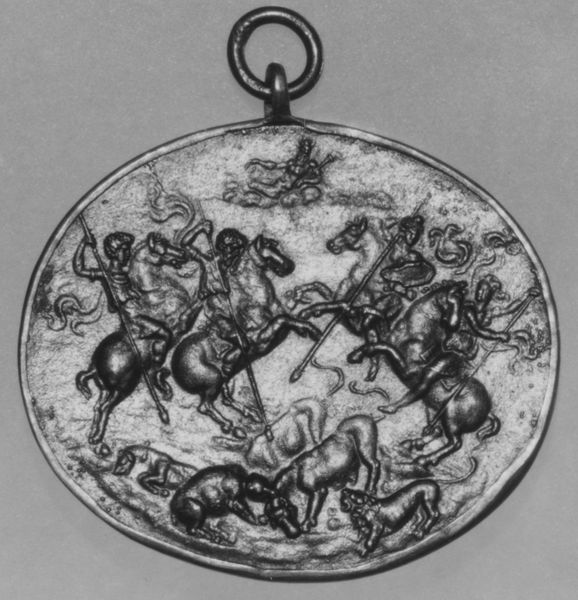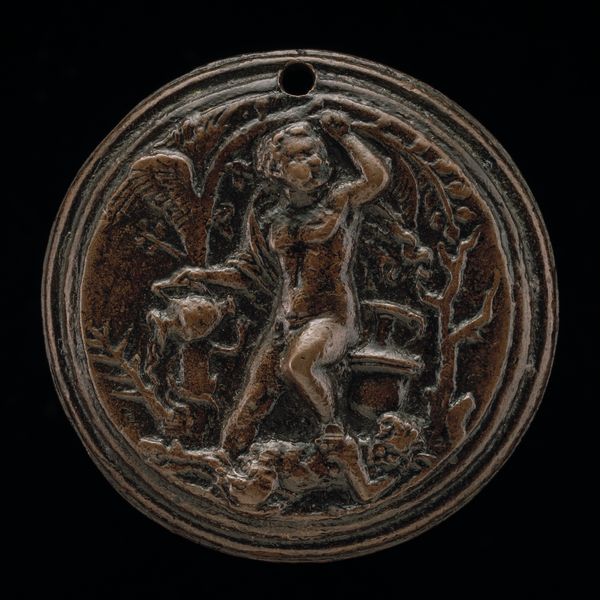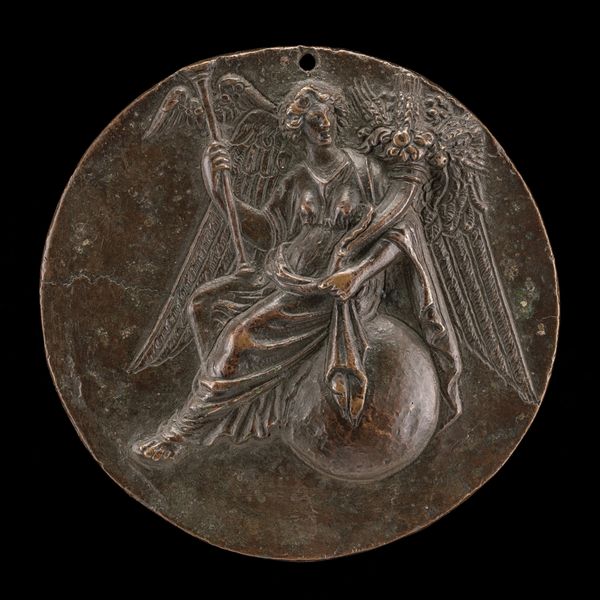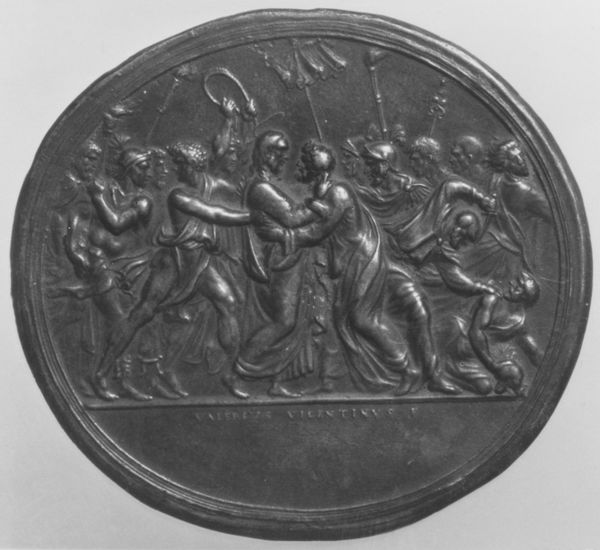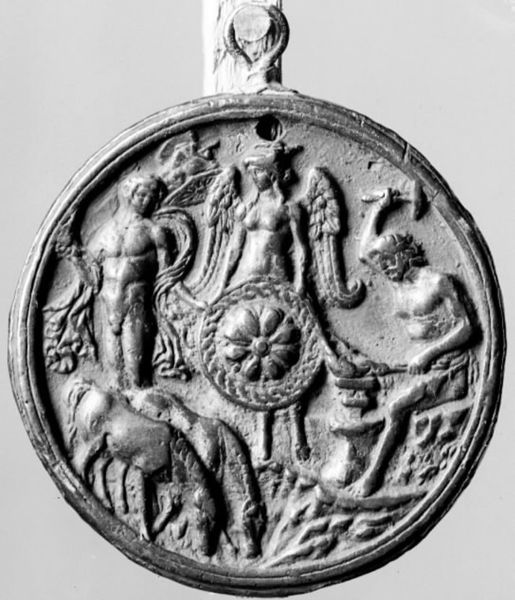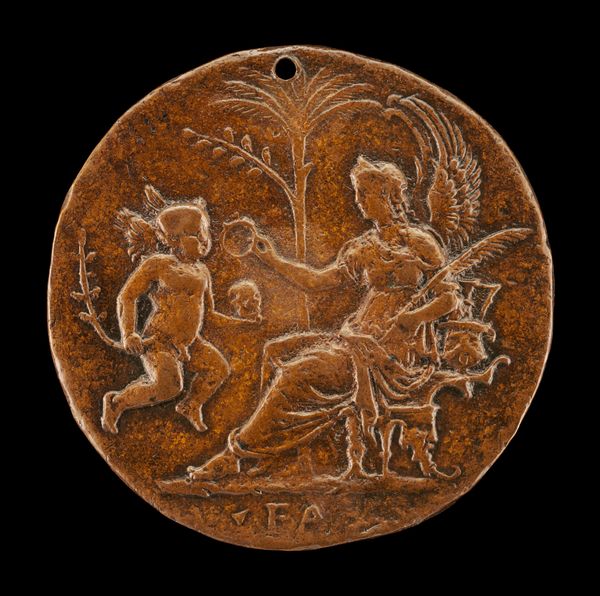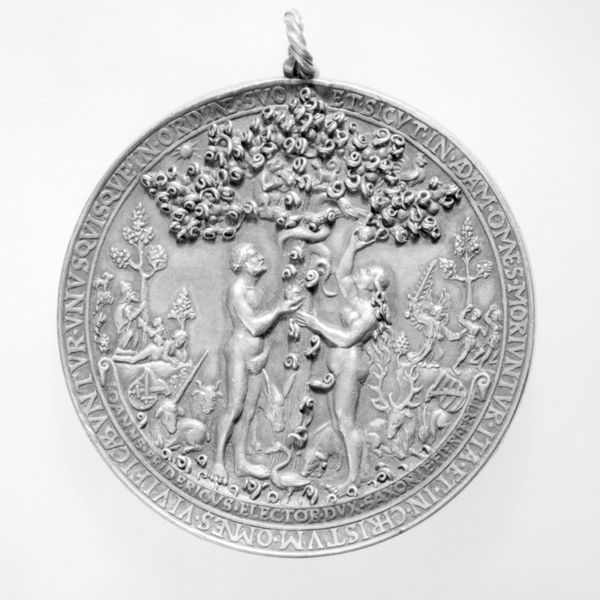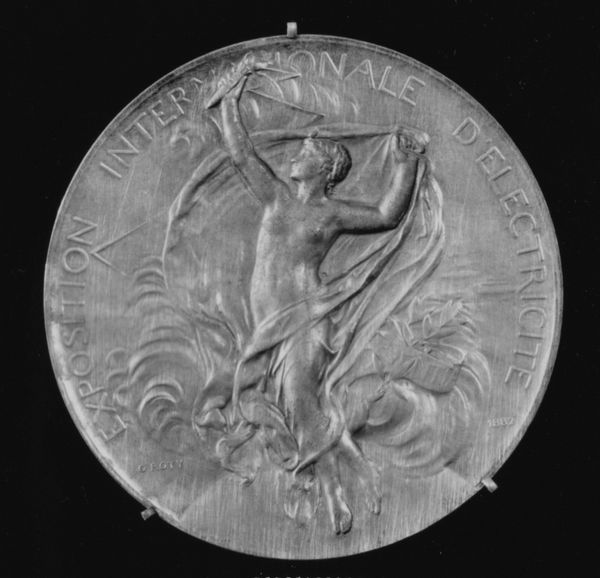
Apollo and the Serpent Python 16th century
0:00
0:00
metal, relief, sculpture
#
portrait
#
medal
#
narrative-art
#
metal
#
sculpture
#
relief
#
figuration
#
geometric
#
sculpture
#
history-painting
#
decorative-art
#
italian-renaissance
Dimensions: Diameter: 3 in. (7.6 cm)
Copyright: Public Domain
Curator: Here we have a 16th-century relief sculpture attributed to Pseudo Francesco Antonio da Brescia, depicting Apollo and the Serpent Python. It's housed here at the Met. Editor: The immediate impression is one of dramatic restraint. The composition, confined within the circular frame, creates a sense of focused intensity, like a controlled explosion. The metal's cool grey tones enhance that. Curator: It's fascinating how this material, likely bronze or lead, lends itself to storytelling. Consider the process of creating such a relief in metal – the mold-making, the casting, the chasing to refine details. It speaks to the artisan's labor and skill. I wonder if such art would have been considered more “decorative” than the sort found in sculpture? Editor: Definitely not simply "decorative," I think it serves on a deeper level. Look at Apollo, for instance, eternally youthful, standing victorious over the slain serpent. It's a clear visual representation of order conquering chaos, light triumphing over darkness, themes which reverberate through the collective consciousness of the time. Also his contrapposto feels borrowed from painting, a common trait with high renaissance reliefs. Curator: But there’s also the context of production. This would likely have been made in a workshop setting, where assistants contributed to various stages. So, the concept of individual artistic genius becomes more complex; it's embedded within a collaborative environment, involving materials acquisition, division of labor and finally commercial exchanges that put the medal in the market. Editor: Agreed, it adds layers of significance. Think of Apollo's quiver alongside him, adorned with laurel—symbols of poetry, music, and healing, suggesting a promise of restoration after the defeat of chaos. It speaks not just to the event, but the aftermath, of the role of enlightened civilization. Curator: It almost argues against the modern art paradigm, doesn't it? We're so focused on the artist’s unique intention, overlooking how workshops democratized the distribution of artistic narratives. Here’s one artifact reaching broader markets due to a systematized means of production. Editor: But it makes perfect sense when considered alongside other iconography present at the time. Renaissance art had an intrinsic interest in the Classics, using mythology as a springboard to examine fundamental aspects of humanity. Each symbolic reference contributes meaningfully. Curator: Well, regardless of individual artistic intent, it certainly is an exemplar of material ingenuity. Thanks for pointing that out, maybe looking at how Apollo gets created gets us closer to grasping the symbolism too. Editor: Absolutely, by delving into its symbols and material components, we hopefully revealed how “Apollo and the Python Serpent” carries a complex dialogue with both Renaissance ideology and artistic production.
Comments
No comments
Be the first to comment and join the conversation on the ultimate creative platform.


